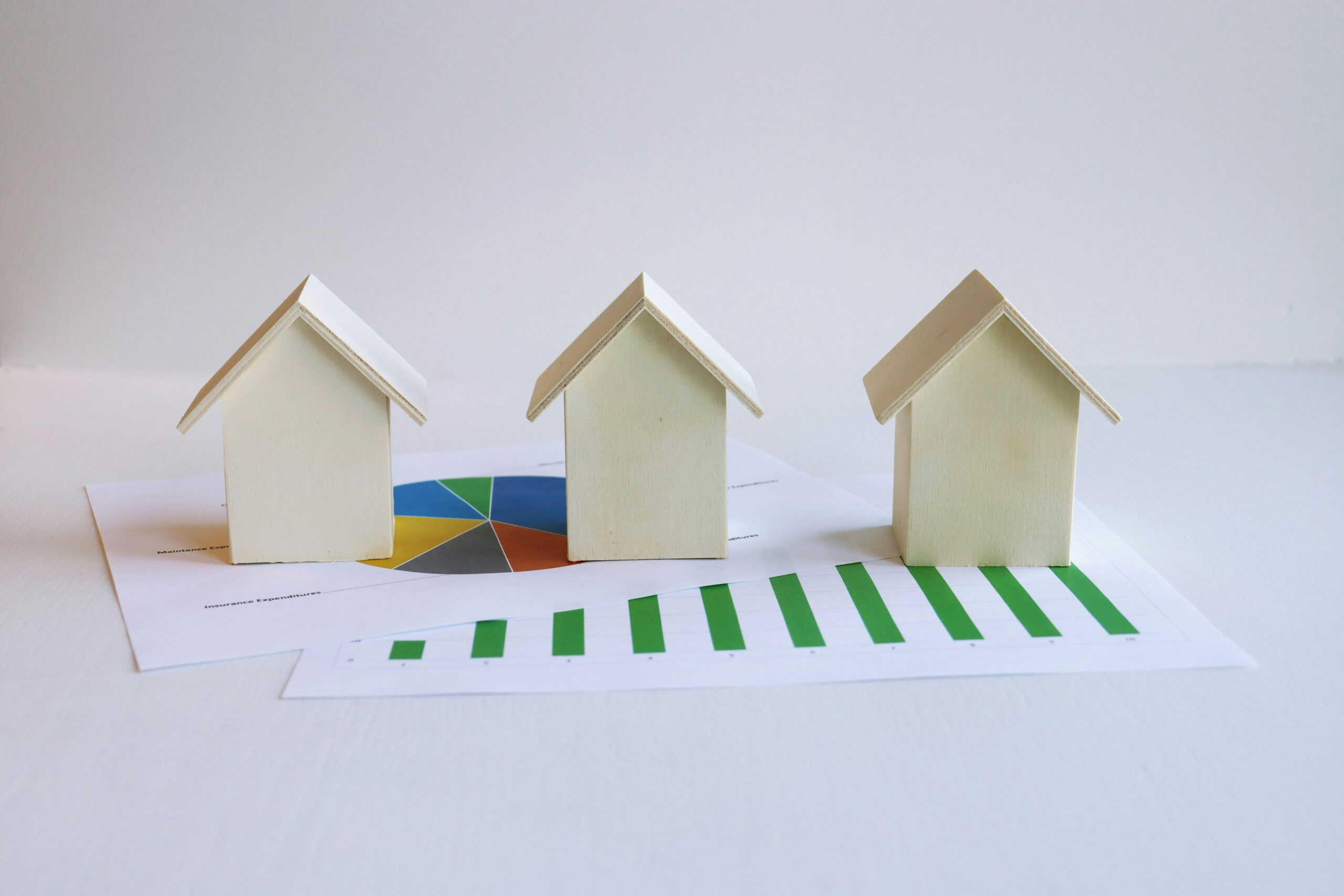Why the U.S. Housing Market in 2025 is a Rollercoaster Worth Watching
By Ethan Brooks |

The U.S. housing market has always been a wild ride, but 2025 is shaping up to be a year of twists and turns that could keep even the savviest homebuyers and investors on their toes. Picture this: just a few years ago, mortgage rates dipped to historic lows of 2.65% in January 2021, making homeownership feel like a golden opportunity for first-time buyers. Fast forward to June 2025, and rates are hovering around 6.84%, with economic uncertainty casting a shadow over the market. From global trade tensions to shifting consumer confidence, the housing landscape is a fascinating mix of opportunity and caution. Whether you’re dreaming of your first home, eyeing a refinance, or just curious about where the market’s headed, understanding these trends is key to making smart moves.
Why does this matter to you? If you’re a potential buyer, seller, or homeowner, the 2025 housing market could directly impact your wallet, your plans, and even your stress levels. High home prices, sticky mortgage rates, and a growing inventory are creating a unique moment—one where patience might pay off, but hesitation could cost you. Let’s dive into what’s driving this market, why it’s unlike anything we’ve seen recently, and how you can navigate it with confidence. Ready to unpack the chaos and opportunity of the 2025 U.S. housing market? Let’s go!
The State of the U.S. Housing Market in 2025
A Brief History of Boom and Bust
The U.S. housing market has a knack for drama. Back in the early 2000s, it was a frenzy of easy loans and skyrocketing prices, only to crash spectacularly in 2008, leaving millions reeling. The recovery was slow, but by the 2010s, steady growth and low interest rates fueled a new boom. Then came 2020, when the pandemic turned everything upside down. Mortgage rates plummeted to record lows, sparking a buying spree that drove home prices up nearly 50% in just five years. But as the Federal Reserve hiked rates to tame inflation in 2022 and 2023, the market cooled, and by 2025, we’re in a peculiar spot: not quite a boom, not quite a bust, but a tense standoff between buyers, sellers, and economic forces. Think of it like a high-stakes poker game where everyone’s waiting for the next card.
What defines this moment? It’s the interplay of high home prices, elevated mortgage rates, and a cautious consumer mindset. The market’s no longer a free-for-all, but it’s not crashing either. Inventory is up—the highest since January 2020—but demand is sluggish, thanks to affordability challenges and fears of economic instability. This delicate balance makes 2025 a year to watch closely.
What Makes This Market Unique
Unlike the frenzied days of 2021 or the gloom of 2008, today’s market is a paradox. There’s more inventory, yet homes aren’t flying off the shelves. Why? For one, the “rate lock-in effect” is keeping sellers glued to their low-rate mortgages from years past—think 3% versus today’s 6.84%. Imagine owning a home with a $1,500 monthly payment and facing a new one at $2,500 if you move. You’d probably stay put too! Meanwhile, buyers are picky, holding out for lower rates or better prices, especially first-time buyers who are squeezed by median home prices around $403,700. Add in global trade tariffs and geopolitical jitters, and you’ve got a market that feels like it’s holding its breath.
Another unique factor is the rise of new home construction. Builders are stepping in to fill the gap left by hesitant sellers, offering incentives like mortgage rate buydowns to sweeten the deal. For example, a builder might cover part of your interest rate for the first two years, dropping your effective rate from 6.84% to something closer to 4.84%. This isn’t just a sales tactic—it’s a lifeline for buyers struggling with affordability. The catch? New homes often come with premium price tags, and not every buyer wants to live in a freshly built subdivision far from city centers.
Current Trends and Opportunities in 2025
The Numbers Tell the Story
Let’s break down the state of the market in June 2025:
- Mortgage Rates: The average 30-year fixed-rate mortgage is 6.84%, down slightly from 6.93% a week earlier, but still high compared to the 2.65% lows of 2021. Forecasts suggest rates will stay between 6.1% and 6.7% by year-end, with no dramatic drops expected.
- Home Prices: Median home values are up 2.7% year-over-year at $403,700, though some regions see softening prices due to increased inventory.
- Inventory: Housing stock is at its highest since January 2020, with 1.37 million homes available in October 2024, a 0.7% increase month-over-month.
- Demand: Mortgage applications dropped 2.6% in the week ending June 13, 2025, with purchase applications down 3% and refinance applications down 2%. However, purchase demand is still 14% higher than last year, showing some resilience.
- Economic Context: The Federal Reserve held rates steady at 4.25%–4.5% in May 2025, with inflation hovering around 3–3.5%, above the Fed’s 2% target. Tariffs and trade tensions are adding volatility, potentially pushing inflation higher.
These numbers paint a picture of a market in flux. Buyers are dipping their toes in, but many are spooked by economic uncertainty, from tariffs to job market concerns. Sellers, meanwhile, are reluctant to list unless they absolutely must, thanks to those low-rate mortgages they’re clinging to.
Opportunities for Buyers and Sellers
Despite the challenges, there are silver linings:
- For Buyers: More inventory means more choices, especially in markets like the South and West, where new construction is booming. VA loans and USDA loans offer low or no down payment options, with VA loans boasting ultra-low rates for eligible veterans. For example, a veteran buying a $300,000 home with a VA loan at 6% could save thousands compared to a conventional loan at 6.84%. First-time buyers might also explore programs like Rocket Mortgage’s ONE+ mortgage, which requires just 1% down with a 2% lender grant.
- For Sellers: If you’re not locked into a low-rate mortgage, now’s a decent time to sell, especially in areas with limited inventory. Offering to cover closing costs or a temporary rate buydown can make your home stand out. Just be prepared for buyers to negotiate hard—pending sales are down, and canceled sales are up, signaling skittish buyers.
- For Refinancers: Refinancing is tricky with rates near 7%, but those with adjustable-rate mortgages (ARMs) might consider switching to fixed rates to avoid future hikes. Cash-out refinances are also an option for homeowners sitting on significant equity—about 90% of homeowners have rates below 6%, making equity a powerful tool.
Why the 2025 Housing Market Is Captivating
The housing market’s grip on our attention comes from its role as a barometer of broader economic health. When mortgage rates climb or home sales stall, it’s not just about real estate—it’s about consumer confidence, inflation, and global trade. In 2025, several factors are fueling this fascination:
- Economic Uncertainty: President Trump’s tariff policies, announced in April 2025, have rattled markets, pushing Treasury yields up and adding volatility to mortgage rates. For instance, a proposed 25% tariff on steel and aluminum could raise construction costs, nudging new home prices up by an estimated $9,200. This uncertainty keeps buyers and sellers on edge, wondering if a recession is looming or if stability will return.
- The Affordability Crisis: With median home prices at $403,700 and monthly payments around $2,860, about 70% of American households can’t afford a $400,000 home. This stark reality has sparked debates about housing policy, from immigration’s impact on construction labor to potential privatization of Fannie Mae and Freddie Mac, which could further raise borrowing costs.
- Cultural Shifts: The market reflects changing priorities. Millennials and Gen Z are driving demand for starter homes, but many are opting to rent due to affordability woes. Meanwhile, multigenerational households are making a comeback as families pool resources to combat high prices. These trends highlight a society grappling with economic pressures in creative ways.
- Builder Resilience: Large homebuilders like Tri Pointe Homes are bullish, using financial muscle to offer incentives and keep sales moving. Their optimism contrasts with smaller builders’ struggles, creating a two-tiered market where big players thrive while local ones face tighter margins.
This mix of economic, cultural, and policy-driven drama makes the housing market a story that’s hard to look away from. It’s not just about buying a house—it’s about navigating a world of trade wars, Fed policies, and personal dreams in a high-stakes environment.
Your Next Move in the 2025 Housing Market
The U.S. housing market in 2025 is like a puzzle with pieces that don’t quite fit yet—high prices, sticky rates, and cautious buyers are keeping things in a holding pattern. But there’s opportunity in the chaos: more inventory gives buyers options, while sellers with flexibility can stand out. For those eyeing a refinance, strategic timing could unlock equity or stabilize payments. The key is to stay informed—watch economic indicators like inflation reports and Fed announcements, and consider your financial goals. Whether you’re a first-time buyer dreaming of a starter home, a seller weighing your options, or a homeowner sitting on equity, 2025 is a year to act thoughtfully.
What’s your take on this wild market? Are you waiting for rates to drop, or ready to jump in now? Share your thoughts in the comments, or dive deeper into housing trends at Freddie Mac or Realtor.com. Let’s keep the conversation going!




